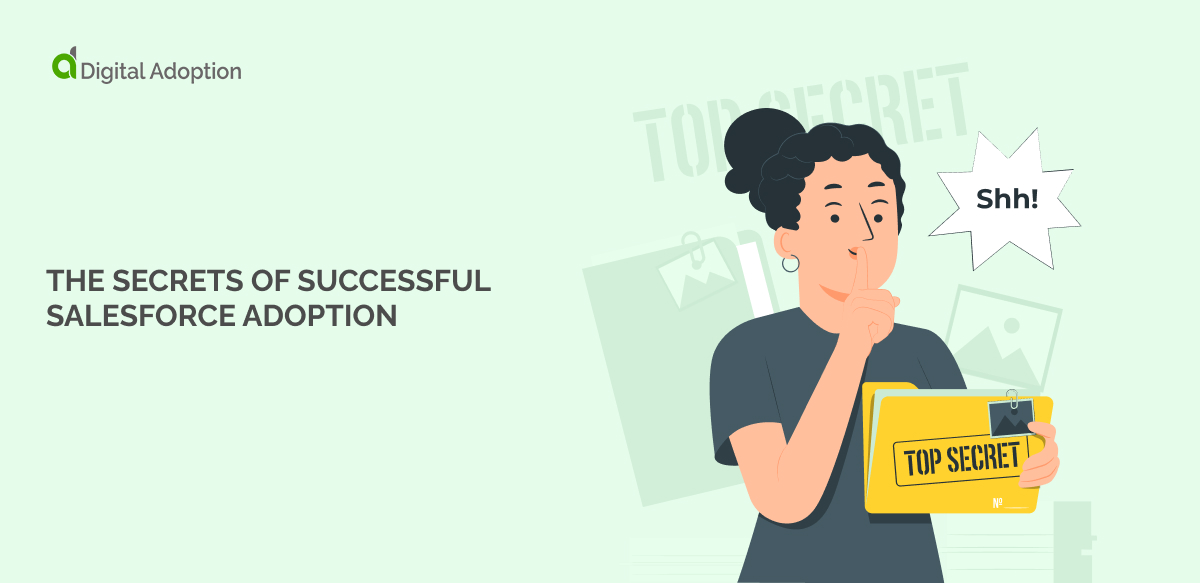Salesforce’s cloud-based CRM software is a staple for many companies today. But how many of them are getting a good ROI on this software investment?
Salesforce is a powerful tool that helps businesses optimize operations, improve customer relationships, and increase revenue. However, paying for a Salesforce subscription does not mean you’re achieving its full value.
It’s a similar story to any kind of digital adoption project. To get the most out of your digital investments, acquiring a software package is only part of the picture. You’ll need comprehensive adoption strategies for the best results.
As a McKinsey report explained, the pandemic dramatically increased the adoption of digital strategies in the workplace. Don’t get left behind. Packages like Salesforce help companies to streamline their operations, improve customer relationships, and increase revenue. By adopting Salesforce effectively, this can all be achieved – with a great ROI.
In this post, we will explain how to make this happen. We’ll start by explaining why Salesforce adoption is so important and why it’s tough to get full Salesforce adoption. We will explain how to improve your salesforce adoption rates – whether you need a “quick fix” or a deep strategy.
Why is Salesforce Adoption so important?
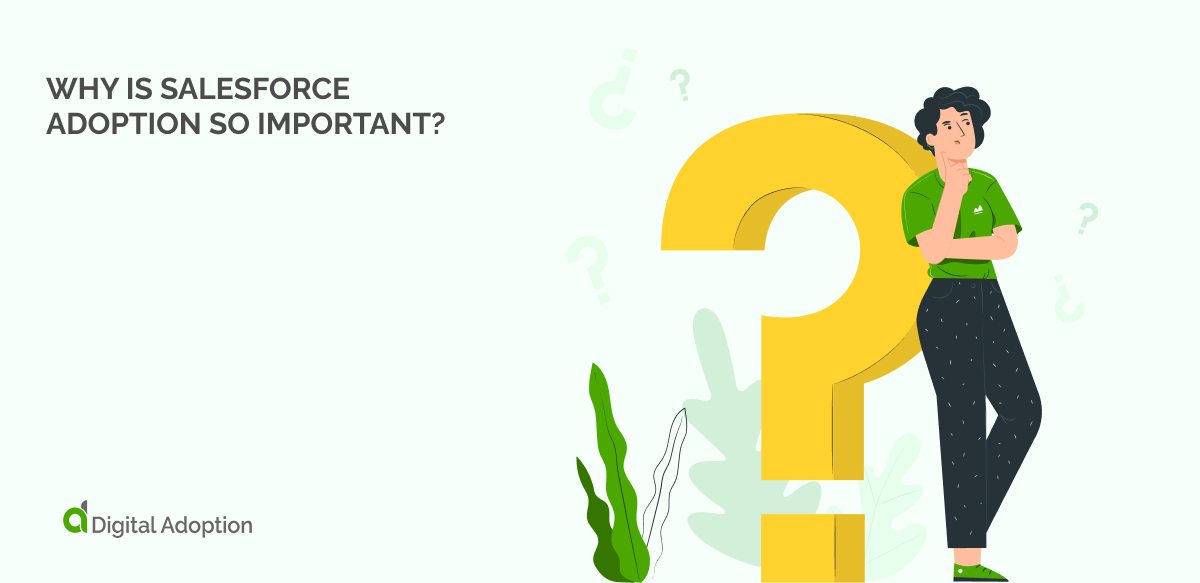
Salesforce has been the go-to CRM software since the dawn of Web 2.0. The CRM marketplace is more competitive than it was. But salesforce remains widespread in medium and large business customers.
These clients naturally invest significant money in acquiring access rights to Salesforce. And with good reason: generations of businesses have now experienced the wide range of benefits that CRM packages can bring.
However, like many pieces of software, It can be the victim of digital friction when employees have to use a lot of software and end up using the existing software badly.
It is possible that the staff is not aware of all the features that Salesforce offers, or they may be unsure about how to use them. Additionally, there may be a familiar way of doing things that feels simpler, even though it may not be the most efficient method.
In an ideal world, The answer to many problems is an effective Salesforce adoption strategy. In reality, you may need some quick fixes once your problems have arisen.
The reasons why Salesforce Adoption fails
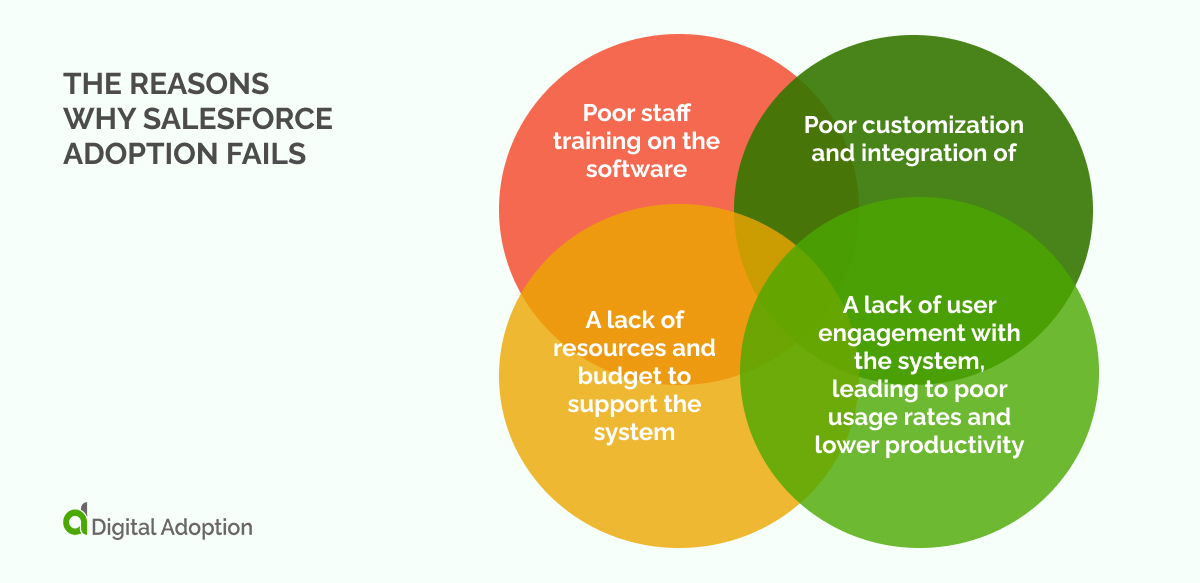
Simply put, Salesforce adoption is most likely to fail when there is no implementation strategy in place. Digital adoption does not happen by chance. So as soon as you start thinking about strategy, your chances of success improve!
Some more specific reasons for failure might include:
- poor staff training on the software
- a lack of user engagement with the system, leading to poor usage rates and lower productivity
- Poor customization and integration of
- a lack of resources and budget to support the system.
Weigh these dimensions up carefully when you’re getting ready for Salesforce adoption. Unfortunately, even companies with digital adoption strategies can find that software adoption fails. Digital implementation always comes with risks: and it’s the job of strategy consultants to reduce those risks as far as possible.
Quick fixes for poor salesforce adoption
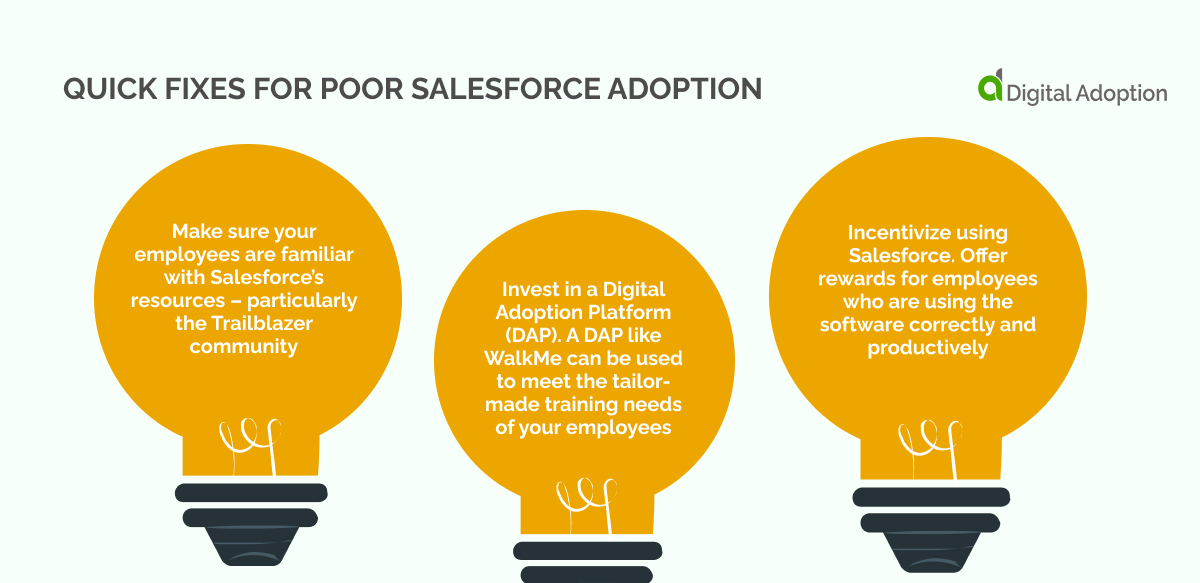
Let’s start with the worst-case scenario.
You’ve subscribed to Salesforce. Your workforce now has full access to it. However, it’s clear that no one is using it. What can you do in this situation?
Before you roll back your deployment to the start, see if these three ideas can make a difference.
- Make sure your employees are familiar with Salesforce’s resources – particularly the Trailblazer community. Trailblazer is a user-friendly library of tutorials, training materials, and community forums to help anyone get the most out of their Salesforce investment.
- Invest in a Digital Adoption Platform (DAP). A DAP like WalkMe can be used to meet the tailor-made training needs of your employees. It will provide them with step-by-step instructions on using Salesforce correctly and guidance about when and how to use certain features. Moreover, a Digital Adoption Platform will help you observe and report usage statistics.
- Incentivize using Salesforce. Offer rewards for employees who are using the software correctly and productively. This can help to encourage users to adopt the platform more effectively than simply paying lip service to its functions. Conversely, it’s also important to be wary of incentivizing non-adoption, so make sure that you set clear goals and objectives when implementing incentives.
Strategic salesforce adoption: the steps you need to take
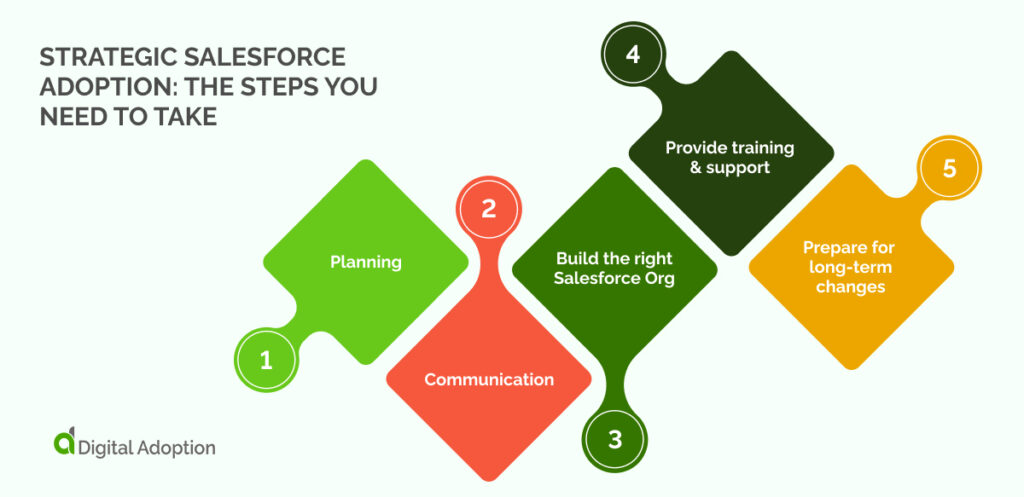
You need a great user adoption strategy if you want great Salesforce adoption.
The best time to think about your strategy is long before you deploy the software. If you think about the software adoption strategies at the very beginning of your project, you stand a much higher chance of success. So what do you need to do?
Here, we’ll discuss some of the main processes you need to address: including planning, communication, training, and adapting the Salesforce org appropriately.
Planning
Firstly, plan ahead. Consider the different types of users and how they will use Salesforce to achieve their goals. Identify any potential “red flags” in terms of adoption. For example, does your team need to learn a new skill in order to make the most out of the software? Do you have adequate resources available to support the adoption?
Communication
Just like any change management project, be open about your business plans. Effective communication is essential when implementing any kind of software. Speak to staff members, explain what’s happening, and encourage them to ask questions or raise concerns. Let everyone know that you are there for support if they need it.
Build the right Salesforce Org
Like many cloud-based software packages, Salesforce is not an off-the-rack solution. It is extremely adaptable, with many choices to make. So you need to take time to build the right software experience for your employees.
An org in Salesforce represents a segregated workspace where users can access and interact with their organization’s data, collaborate, and perform various business functions such as sales, marketing, customer service, and analytics. Depending on the type of Salesforce edition and licensing, an organization may have multiple Orgs, such as production orgs, sandbox Orgs for testing and development, or specialized Orgs for specific business units or regions.
Provide training & support
Before, during, and after deployment, you need to provide training and support for users. Training can take many forms, such as online courses, webinars, or in-person workshops. It is also worth considering specialist Salesforce trainers who understand the software and its capabilities.
It’s also important to provide ongoing support for users. This could be through a dedicated helpdesk or by providing access to community forums where users can ask questions.
Digital Adoption Platforms are a great tool to support ongoing training. They can provide in-app help, walk-throughs, and other guidance to ensure optimal take-up.
Prepare for long-term changes
Being able to effectively use Salesforce is only the beginning of your journey. As your organization grows and changes, so should your Salesforce implementation. The software must be continually evaluated and tweaked to maximize its value. This means ensuring that you stay ahead of the curve regarding features, functionality, customization, scalability, and security.
Ultimately, if you plan ahead, communicate effectively, build the right orgs, provide training and support, and understand long-term changes, you will have a much better chance of success with Salesforce adoption.
Salesforce Adoption: Thoughts for the future
As we’ve seen, careful planning will improve your chances of Salesforce Adoption success.
But there is another way to see it. You might actually find that Salesforce isn’t right for you. Other CRMs may be more suitable. As a 2022 CRM survey from Civil Society showed, other packages like Beacon and Donorfy have higher recommendations from charitable organizations.
Or another strategy, such as homegrown CRM adoption, might be more appropriate for you.
Ultimately, every organization should evaluate its specific needs and objectives. Taking time to research and consider your options can save you a lot of headaches down the road.
You can ensure a successful Salesforce implementation by assessing your organizational needs, building an effective org architecture, providing personnel training & support, and understanding long-term changes.
Doing so will enable your organization to realize the full potential of its digital transformation journey.

